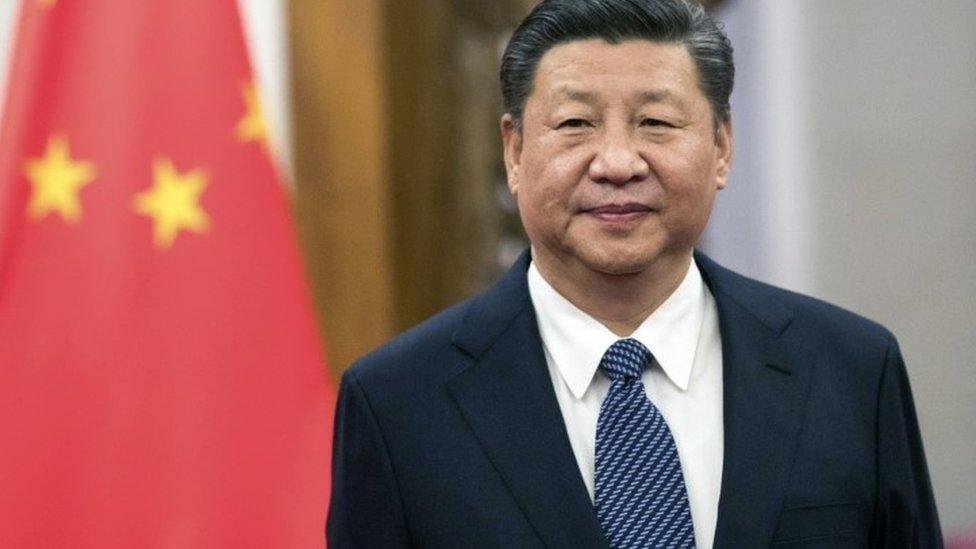- Courses
- GS Full Course 1 Year
- GS Full Course 2 Year
- GS Full Course 3 Year
- GS Full Course Till Selection
- Answer Alpha: Mains 2025 Mentorship
- MEP (Mains Enrichment Programme) Data, Facts
- Essay Target – 150+ Marks
- Online Program
- GS Recorded Course
- Polity
- Geography
- Economy
- Ancient, Medieval and Art & Culture AMAC
- Modern India, Post Independence & World History
- Environment
- Governance
- Science & Technology
- International Relations and Internal Security
- Disaster Management
- Ethics
- NCERT Current Affairs
- Indian Society and Social Issue
- NCERT- Science and Technology
- NCERT - Geography
- NCERT - Ancient History
- NCERT- World History
- NCERT Modern History
- CSAT
- 5 LAYERED ARJUNA Mentorship
- Public Administration Optional
- ABOUT US
- OUR TOPPERS
- TEST SERIES
- FREE STUDY MATERIAL
- VIDEOS
- CONTACT US
India Web3 Landscape’ report- Hashed Emergent
India Web3 Landscape’ report- Hashed Emergent

Introduction
- Recently, a report by Hashed Emergent highlighted India’s rapid rise as a global Web3 leader, projecting it to become the largest Web3 developer hub by 2028, surpassing the U.S. This growth is driven by a booming developer base, rising startup investments, and evolving government policies. With over 1,200 Web3 startups and $3 billion in funding, India’s Web3 ecosystem is expanding rapidly, shaping the future of decentralized technology.
Key Highlights of the Hashed Emergent Report
1. Developer Growth and Leadership
- India’s Web3 Position: Set to become the world’s largest Web3 developer community by 2028, surpassing the U.S.
- New Developer Growth: India added over 4.5 million developers to GitHub in 2024, with a 28% year-over-year growth rate. Nearly 17% of new Web3 developers globally are from India
- Crypto Developer Base: India holds the second-largest crypto developer base globally, with 11.8% of Web3 developers.
2. Startup Ecosystem
- Number of Startups: India is home to 1,200+ Web3 startups, making it the third-largest Web3 startup base globally.
- Funding Growth: Web3 startups raised $564 million in 2024, a 109% increase from 2023.
- Cumulative Funding: Investments in the Indian Web3 ecosystem have surpassed $3 billion.
3. Developer Skills and Focus
- Skill Contribution:
- 45.3% of Indian Web3 developers contribute code
- 29.7% focus on bug fixes.
- 22.4% work on documentation.
- Industry Focus:
- Gaming and NFTs engage 30% of developers
- DeFi and Real World Assets (RWAs) account for 26%.
4. Investor Confidence
- Global Investments: Companies like Coinbase Ventures and Animoca Brands are heavily investing in India.
- Local Investors: Indian firms such as Hashed Emergent and CoinDCX are supporting Web3 startups.
5. Regulatory & Government Support
- Evolving Regulations: The government is shifting towards structured regulatory frameworks like the National Blockchain Framework.
- Enterprise Adoption: Major Indian companies are integrating Web3 solutions into their business models.
6. Consumer & Enterprise Adoption
- On-Chain Transactions: India has 35+ million trading accounts on top Web3 exchanges.
- Gaming Sector: Indian gamers are spending more on Web3-based gaming than on traditional gaming platforms.
Understanding Web3: The Next-Generation Internet
What is Web3?
Web3 represents a decentralized internet where users have full control over their data and digital assets. Unlike Web1 (static websites) and Web2 (social and interactive web), Web3 uses blockchain, smart contracts, and token-based economies to create a trustless and transparent ecosystem.
Key Features of Web3
- Decentralization – No central authority; data is distributed across multiple nodes.
- Ownership & Control – Users have full control over their data and digital identity.
- Smart Contracts – Automated agreements that execute transactions without intermediaries.
- Interoperability – Seamless integration between different blockchain-based applications.
- Trustless Transactions – No need for a trusted third party; transactions are secured via cryptographic protocols.
Technologies Used in Web3
- Blockchain: A decentralized ledger technology that stores data in blocks, making it transparent and tamper-proof
- Cryptocurrencies: Digital currencies like Bitcoin and Ethereum facilitate transactions in the Web3 ecosystem
- NFTs (Non-Fungible Tokens): Unique digital assets that represent ownership of specific items or content
- Machine Learning and AI: These technologies enhance the user experience by making the web more intelligent and responsive.
Evolution of the Web: Web1 vs. Web2 vs. Web3
|
Feature |
Web 1.0 (1990s-2000s) |
Web 2.0 (2000s-2010s) |
Web 3.0 (2020s-Present) |
|
Interaction |
Read-only |
Read & Write |
Read, Write & Own |
|
Purpose |
Information Sharing |
Social Interaction |
Decentralized & Tokenized Economy |
|
Ownership |
Controlled by websites |
Controlled by platforms |
Controlled by users |
|
Technologies |
HTML, Portals |
JavaScript, Social Media |
Blockchain, AI, Smart Contracts |
|
Data Storage |
Centralized |
Centralized |
Decentralized |
|
Security |
Basic |
Moderate |
High via Blockchain |
|
Examples |
Static Websites |
Facebook, YouTube |
dApps, NFTs, DeFi |
Web3 Applications and Notable Projects in India
Web3 is revolutionizing various industries in India, driving efficiency, transparency, and new revenue opportunities across multiple sectors.
Key Applications of Web3 in India
- Blockchain-based Gaming – Indian gamers actively engage in blockchain-powered games, where they own in-game assets and participate in cross-platform transactions, boosting spending and engagement.
- Supply Chain Management – Blockchain is improving supply chain transparency, with Telangana implementing blockchain for land records, reducing fraud and enhancing efficiency.
- Digital Identity Solutions – Platforms like SelfKey allow users to manage digital identities securely, reducing identity theft risks and improving privacy protection.
- NFTs in Art and Entertainment – Indian artists leverage NFT marketplaces to monetize digital art directly, bypassing intermediaries and creating new income streams.
- Finance & Banking – Blockchain is improving security and efficiency, with initiatives like the National Blockchain Framework.
- Healthcare & Education – Decentralized storage ensures secure health records and verifiable educational credentials.
Successful Web3 Projects in India
- Questbook – A startup focused on verified credentials and grants management, working with Polygon and Solana, backed by top crypto VC funds.
- Vishvasya Blockchain Project – A government-backed initiative improving transparency and security in public services through blockchain technology.
- Leap Wallet – A Web3 wallet solution facilitating seamless digital transactions and asset management, catering to India’s growing decentralized finance ecosystem.
Government Initiatives Driving Web3 Growth in India
The Indian government is actively shaping policies, infrastructure, and adoption strategies to support Web3 development.
- Evolving Regulatory Framework – India is transitioning from a restrictive stance to structured oversight, with initiatives like the National Blockchain Framework fostering Web3 adoption.
- Digital Infrastructure Investment – Government-backed initiatives like Unified Payments Interface (UPI) are paving the way for seamless Web3 integration and blockchain-powered applications.
- State-Level Innovation – States like Telangana, Maharashtra, and Tamil Nadu are encouraging Web3 startups through regulatory sandboxes and industry partnerships.
- Public Sector Blockchain Adoption – Large-scale projects like Vishvasya Stack and Praamaanik are implementing blockchain solutions to enhance public services across multiple states.
Challenges Hindering Web3 Growth in India
Despite rapid advancements, Web3 adoption in India faces regulatory, financial, technical, and social challenges that hinder its growth.
1. Regulatory and Taxation Uncertainty
- Lack of Clear Guidelines: The absence of well-defined Web3 regulations discourages investment and innovation.
- High Taxation: A 30% tax on virtual digital assets and 1% TDS on transactions push businesses offshore.
2. Complexity and Limited Adoption
- Technical Barriers: Web3 applications require digital wallets and crypto tokens, which can be difficult to use.
- Low Awareness: Many potential users lack knowledge about Web3, slowing adoption.
3. Funding and Talent Challenges
- Investment Fluctuations: Despite $564 million raised in 2024, funding remains inconsistent.
- Talent Migration: Indian blockchain developers earn less than global counterparts, leading to brain drain.
4. Social and Security Concerns
- Negative Public Perception: Web3 is often linked to speculative crypto trading, reducing trust.
- Security Risks: Privacy concerns and Web3 scams make users hesitant to engage.
Way Forward for Web3 Growth in India
To overcome these challenges, government support, investment incentives, and user-friendly adoption strategies are crucial.
1. Regulatory and Investment Reforms
- Clear Policy Framework: Establish structured Web3 regulations to encourage safe innovation.
- Balanced Taxation: Reduce crypto taxation to prevent capital flight and attract investors.
2. Strengthening Talent and Startup Ecosystem
- Upskilling Programs: Introduce Web3 training in universities to build a skilled workforce.
- Startup Support: Create accelerator programs and government-backed funding initiatives for Web3 startups.
3. Improving Adoption and Security
- User-Friendly Interfaces: Simplify Web3 platforms for mainstream adoption.
- Consumer Awareness: Promote educational campaigns to build trust in Web3 technology.
Conclusion
- India’s Web3 sector is witnessing rapid growth, but challenges like regulatory uncertainty, high taxation, technical complexity, and security risks must be addressed through clear policies, investment support, talent development, and user education to unlock its full potential.
- With Web3 expected to contribute 27% to India’s GDP by 2032 and generate 8 million jobs, a balanced regulatory framework, infrastructure expansion, and industry collaboration will help India become the largest Web3 developer hub by 2028 and a global leader in decentralized innovation.



